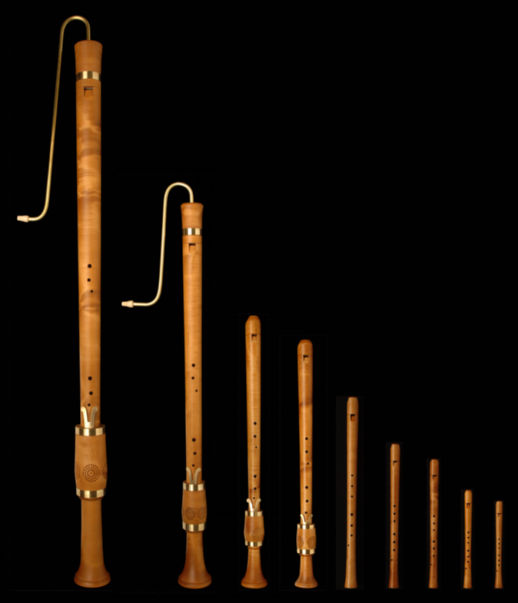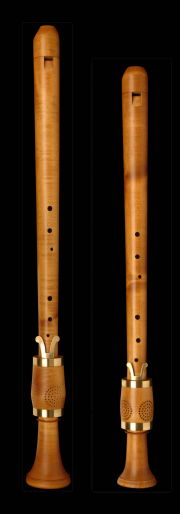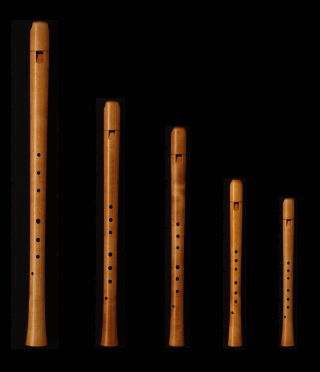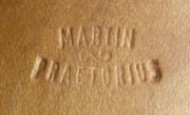Renaissance Consort Recorders


The original Renaissance recorders which I copy are in a = 460 Hz.
Recorders in 440 Hz are compatible to most available instruments. That is why I developed the Consort recorders in 440 Hz.
The individual instruments are mean tone tempered and tuned to one another. Therefore ensemble playing is made much easier. It is not necessary to regulate the pitch of every interval with the blowing pressure. Instead the pressure can remain relatively constant. Enharmonic differences are shown in the fingering table.
The fingering is the same as that of the original instruments. You can choose between the open ninth note (d in the middle range of c instruments) or the closed 2nd finger. Because of the smaller thumb hole you cannot play c sharp with the original fingering with 1 2; here you have to use 0 (the left thumb).
The three lower fingers of the right hand are used for the high a of the soprano recorder (d of the alto recorder). Therefore the a(d) is in tune and secure.
The instruments are tempered so that none of them sticks out of the consort because it is too loud or because it has a soloistic quality. However each instrument keeps its individual charm. I have given the soprano recorder in particular a more discreet character as far as volume in concerned.
The Renaissance Consort recorders are made in one piece after the originals.
The fact that that the instruments are made out of one piece is obviously a problem for some players, because further tuning by pulling out the head piece is not possible.

Normally it does not make sense to tune to another instrument which is flat rather than generally re-tuning the offending instrument. By pulling out the head piece the pitch of the whole instrument does not become lower evenly, instead it becomes out of tune in itself.
The argument which Michael Praetorius made in Syntagma Musicum, volume II, DE ORGANOGRAPHIA that church organs were a semitone lower in winter than in summer, and that the recorders has to be adjusted to fit in with them, is no longer valid because it is usual for churches to be heated in winter nowadays.
Apart from that, I believe that instruments made out of one piece are more attractive to the eye and they are lighter because they do not need a brass ring.



